Having a good understanding of the premiums available in your province and how to achieve them is important for maximizing your revenue. In British Columbia, one of the most important premiums to understand is the Chronic Disease Management (CDM) incentive. In this post, we share all you need to know about billing CDM incentives to make sure you are getting paid for the care you provide to your CDM patients.
Chronic Disease Management Incentives
The Chronic Disease Management Incentives are paid for the additional work (beyond the office visit) of providing guideline-informed care to a patient for eligible condition(s) over a full 12-month period. Guideline-informed care includes consideration of the patient’s goals, values and comorbidities.
Effective January 1, 2021, the CDM incentives are only payable to MRP CLFPS who have submitted 14070, 14071, or MRP FPs with a focused practice in LTC who have submitted 14072. They are only billable once per year to patients with diabetes, congestive heart failure, hypertension, and chronic obstructive pulmonary disease (COPD). Physicians must have met the requirements for and submitted the appropriate zero-dollar portal code (14070, 14071, 14072).
There are four CDM fee codes that can be billed:
| Fee Code | Description | Value |
| 14050 | Diabetes | $125.78 |
| 14051 | Congestive Heart Failure | $125.78 |
| 14052 | Hypertension | $50.31 |
| 14053 | COPD – Not asthma | $125.78 |
We have created a quick reference guide with details on how to bill the CDM fee codes. You can download it here.
CDM Allowable Combinations in a Single Patient
There are specific circumstances where a single patient with a combination of conditions is not billable. For example, the treatment of hypertension (14052) is not billable for the same patient with diabetes (14050) or heart failure (14051). However, you can bill a patient that has both COPD (14053) and hypertension (14052). Please see below for the full chart of CDM allowable combinations in a single patient.
| 14050 Diabetes | 14051 Congestive Heart Failure | 14052 Hypertension | 14053 COPD | |
| 14050 Diabetes | Yes | No | Yes | |
| 14051 Congestive Heart Failure | Yes | No | Yes | |
| 14052 Hypertension | No | No | Yes | |
| 14053 COPD | Yes | Yes | Yes |
Billing Requirements for the CDM Incentives
To be eligible for the CDM fee codes, all physicians must:
- Be an MRP who has accepted full responsibility for providing ongoing longitudinal coordinated care for the patient.
- Have provided one full year of appropriate guideline informed care.
- Use ICD-9 for the condition DM: 250; HF: 428; Hypertension: 401; COPD: 491,492,494,496.
- Have provided the patient at least two visits in the preceding 12 months. Both visits can be physician visits such as office, prenatal, home LTC, or physician telehealth visits. Alternatively, one of the visits must be a physician visit while the 2nd may be:
- A telephone visit (14076 only – as currently 13706 will not count toward a CDM visit); or
- A group medical visit (13763-13781); or
- An age-appropriate telehealth visit (13237-13837) or telehealth counselling (13238-13838)
- An in-person visit with a college-certified allied provider (14029) working with the family physician’s practice
Note: Visits provided by a locum for the MRP CLFP are included; however, an electronic note indicating this must be submitted with the CDM claim.
Communication Codes Included and Excluded from CDM Billing During COVID-19
Due to the COVID-19 pandemic, some communication codes count towards the CDM fees and some have been excluded including:
| Fee Code | Description | Note |
| 14076 | FP Patient Telephone Management | Counts towards CDM fees |
| 14078 | FP Email/Text/Telephone Medical Advice Relay | Does not count toward CDM fees |
| 13237 – 13837 | Telehealth FP Visit (age differentials); replaces 14076 for FP communications with patient (cannot be delegated) | Counts towards CDM fees |
| 13706 | FP Delegated Patient Telehealth management – replaced 14076 for delegated communications to college-certified ACP employed within the physician practice with patient. For delegated phone visits to CDM patients, continue to use 14076. | Does not count towards CDM fees |
| 13707 | FP Email/Text/Telephone Medical Advice Relay or ReRX – replaced 14078 for relay of medical advice from the FP to patient | Does not count towards CDM fees |
Ongoing Management and Care for CDM patients
Once a CDM fee has been successfully billed, if you continue to care for the patient, the CDM may be re-billed on (or any time after) the anniversary date of the last time it was billed if the patient has continued to receive guideline informed care for that chronic disease and been provided two visits in that preceding 12 months.
If you complete the two visits after the anniversary date, and to avoid the billing being rejected, it is best practice not to bill for the anniversary date but for the day after.
If the anniversary date has passed without the CDM fee having been submitted, you can back date up to 90 days if criteria have been met.
CDM Transferred Patients
If patient care is transferred from a previous physician, you must wait until you have cared for the patient for one year before billing the CDM fees. However, if you fully assume a practice with all the patients and charts – then you can bill on the anniversary date of the previous CDM billing if guideline informed care has been provided for the full year, including the required two visits between yourself and the original FP. When submitting the CDM code, include an e-note record indicating the practice has been taken on by the submitting physician.
CDM Long Term Care & Palliative Patients
Long Term Care (LTC) Patients
CDM fees are billable for patients in Long-Term Care facilities. However, use your clinical judgment to determine the appropriateness of applying clinical practice guideline recommendations in patients with dementia or very limited life expectancy.
Palliative Patients
CDM fees are not payable once a 14063 (Palliative Planning visit fee) has been billed and paid as the patient has been changed from active management of chronic disease to palliative management.
Documentation of CDM Guideline Informed Care
The GPSC requires physicians to adequately track and document the care provided to their patients to ensure they are providing guideline informed care. While it is not mandatory to utilize official GPAC flow sheets, if you use a different flow sheet to document your provision of guideline-informed care, all essential elements from the GPAC guidelines must be included. Many EMRs have these flowsheets built in and they auto populate with the lab results.
For more information on clinical guidelines, flow sheets and patient guides for each chronic disease condition, see the section below.
- Diabetes
- Congestive Heart Failure
- Hypertension
- Chronic Obstructive Pulmonary Disease
Need help with your Chronic Disease Management Incentives? We can help! Our Practice Care service can help identify and bill these actionable claims. Contact us today to get started.



